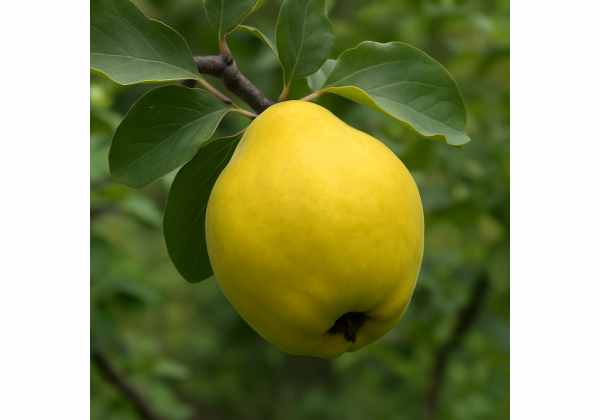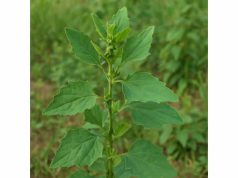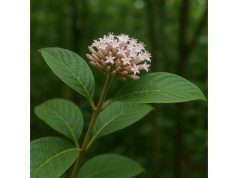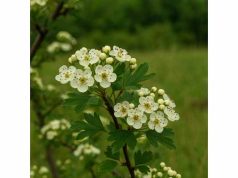
Quince is a time-honored natural remedy and culinary treasure, celebrated for its wide-ranging health benefits, robust active compounds, and versatile medicinal properties. Traditionally used in folk medicine and modern wellness practices, this aromatic fruit is rich in antioxidants, vitamins, and dietary fiber that support digestion, cardiovascular health, and immune function. With a unique blend of organic acids and polyphenols, quince has been linked to anti-inflammatory and antimicrobial effects. Its applications span from nutritious jams and jellies to herbal infusions and skin care formulations, making it a valuable ally for a balanced lifestyle.
Table of Contents
- Botanical Insights and Identification Techniques
- Phytochemical Spectrum and Bioactive Constituents
- Therapeutic Benefits and Functional Attributes
- Practical Applications and Safe Usage Guidelines
- Scientific Investigations and Key Study Outcomes
- Frequently Asked Questions
Botanical Insights and Identification Techniques
Quince (Cydonia oblonga) is a deciduous tree native to the temperate regions of Southwest Asia and the Mediterranean basin. Often mistaken for a pear or apple in appearance, this fruit-bearing tree boasts broad, ovate leaves with a finely serrated margin and star-shaped blossoms that display a pale, creamy hue during the spring. The fragrant blossoms give way to the fruit, which is typically golden-yellow when mature. The quince fruit, with its firm, aromatic flesh, requires cooking to release its full flavor and is known for its tart taste when raw.
Botanically, quince belongs to the Rosaceae family, sharing its lineage with apples, pears, and plums. This affiliation is evident in its flower structure and fruit morphology, yet quince stands apart due to its unique astringent properties and high pectin concentration. In addition to its appealing culinary characteristics, quince has a storied history in traditional medicine, used for its digestive benefits and as an anti-inflammatory agent. Its adaptability to various soil types—from rocky slopes to well-drained loams—makes it a resilient candidate for both commercial orchards and home gardens.
Quince trees can reach moderate heights, typically between 5 to 8 meters, though some specimens may extend taller under optimal conditions. Their trunks are robust and gnarled, a testament to centuries of growth, while their branches spread out in an inviting, rounded canopy that offers both shade and aesthetic charm. The tree’s seasonal rhythm is marked by a burst of white blossoms in the early spring, symbolizing renewal and promising the eventual production of fruits that are as versatile as they are nutritious.
Modern cultivation practices of quince emphasize its dual role as both a culinary fruit and a source of bioactive compounds. In many regions, quince orchards are managed with organic techniques, preserving genetic diversity and enhancing soil quality. The fruit itself is harvested in late autumn, when its flavor profile transitions from tart to subtly sweet upon cooking. This unique characteristic has fostered a culinary tradition of converting quince into jams, jellies, and even savory compotes that serve as accompaniments to meat dishes.
Moreover, quince has garnered interest among botanists and horticulturists for its ornamental value. The tree’s early spring blossoms not only herald the onset of warmer weather but also attract pollinators such as bees and butterflies, playing a critical role in the ecosystem. Its ability to thrive in marginal lands also means that quince contributes to soil stabilization and the prevention of erosion, making it an environmentally significant species in both cultivated and wild landscapes.
The anatomical structure of quince is particularly notable; its thick rind and high pectin content have inspired various industrial applications, including natural gelling agents and biodegradable packaging. Researchers have isolated specific pectic substances that show promise in pharmaceutical formulations aimed at improving digestive health. Furthermore, the tannins present in the fruit contribute to its astringency—a quality prized in traditional remedies for managing diarrhea and other gastrointestinal issues.
In summary, quince is much more than an everyday fruit. Its botanical identity—rich in history, resilience, and multifunctionality—forms the bedrock of its acclaimed health benefits. Whether admired for its ornamental blossom, cultivated for its versatile fruit, or revered in herbal medicine, quince exemplifies a harmonious blend of beauty and functionality that continues to captivate both scientists and culinary experts alike.
Phytochemical Spectrum and Bioactive Constituents
Quince is a nutritional powerhouse, boasting a complex profile of bioactive compounds that contribute to its extensive health-promoting properties. Modern studies have identified a rich assortment of phytochemicals that play a central role in its therapeutic effects. The array of active constituents not only supports cellular defense mechanisms but also enhances overall metabolic functions. Below is an exploration of the primary compounds found in quince, each with its distinct biochemical activity:
- Phenolic Acids (Chlorogenic and Caffeic Acids)
These compounds are renowned for their potent antioxidant properties. They help neutralize free radicals, reducing oxidative stress and inflammation in the body. Their protective effects extend to cardiovascular health, with evidence suggesting a role in lowering the risk of heart diseases. - Flavonoids (Quercetin, Rutin, and Kaempferol)
Flavonoids are among the most important groups of antioxidants found in quince. Quercetin, in particular, exhibits strong anti-inflammatory and antiviral properties, while rutin contributes to capillary strength and vascular health. Collectively, these compounds support immune function and cellular repair. - Tannins
Tannins provide astringent properties that are beneficial in managing digestive issues. Their ability to contract tissues and reduce inflammation makes them useful in treating diarrhea and soothing gastrointestinal irritation. They also act as natural preservatives, which is why quince is often used in the preparation of jams and jellies. - Pectins
High levels of pectin in quince are significant both nutritionally and medicinally. Pectins promote digestive health by aiding in the regulation of bowel movements and enhancing gut flora. Additionally, pectins have been linked to cholesterol-lowering effects and improvements in metabolic syndromes. - Organic Acids (Malic and Citric Acids)
Malic acid and citric acid not only contribute to the fruit’s characteristic tartness but also offer metabolic benefits. These acids aid in energy production and detoxification processes within the liver, bolstering overall metabolic efficiency. Their presence enhances the flavor profile, making quince a favored ingredient in both sweet and savory culinary applications. - Vitamins and Minerals
Quince is a rich source of vitamin C, potassium, and trace minerals such as magnesium and calcium. Vitamin C is integral for immune function and skin health, while potassium helps maintain blood pressure levels. The synergistic effect of these micronutrients supports overall well-being and augments the bioactivity of other compounds in the fruit.
The synergistic interaction among these constituents is central to quince’s reputation as a natural remedy. Advanced analytical techniques, such as high-performance liquid chromatography (HPLC) and gas chromatography–mass spectrometry (GC-MS), have confirmed that the concentration of these bioactive compounds is significant enough to exert measurable pharmacological effects. For example, the potent antioxidant capacity provided by the phenolic acids and flavonoids has been linked to the mitigation of oxidative stress, a key factor in aging and chronic diseases.
Furthermore, the balance of organic acids and pectins in quince also contributes to its role as a prebiotic agent, promoting a healthy intestinal microflora. This activity is crucial in maintaining optimal digestive function and enhancing nutrient absorption, ultimately supporting long-term metabolic health. Researchers continue to explore the complexities of quince’s phytochemical composition, often uncovering new insights into how these compounds work in concert to fortify cellular defenses.
In traditional medicine, quince extracts have been used to treat inflammatory conditions, ulcers, and digestive disturbances. Contemporary scientific investigations have lent credence to these uses by demonstrating that quince polyphenols possess both anti-inflammatory and anti-microbial properties. These findings not only underscore the fruit’s potential in modern medical applications but also affirm its enduring value in natural health practices.
By harnessing the rich phytochemical spectrum of quince, individuals may benefit from enhanced immunity, improved digestion, and overall rejuvenation at the cellular level. This bioactive cocktail is a prime example of nature’s intricate chemistry, offering diverse mechanisms of action that support human health across multiple dimensions.
Therapeutic Benefits and Functional Attributes
The therapeutic benefits of quince extend far beyond its appealing flavor and nutritional profile. This ancient remedy offers a multitude of health advantages, making it a vital component of a balanced diet and a holistic health regimen. By incorporating quince into daily routines, individuals may experience a range of functional benefits that contribute to long-term wellness.
Digestive Health and Gastrointestinal Comfort
Quince has long been valued for its ability to soothe the digestive tract. Its high pectin content acts as a natural bulking agent, facilitating smoother bowel movements and improving overall digestive regularity. Additionally, the astringent properties provided by tannins help in managing diarrhea and reducing inflammation in the gut. As a gentle demulcent, quince can also alleviate symptoms associated with acid reflux and indigestion, making it a trusted remedy for gastrointestinal discomfort.
Cardiovascular Protection
Emerging research suggests that the antioxidants in quince—particularly phenolic acids and flavonoids—play a significant role in maintaining heart health. These compounds work to reduce oxidative stress and inflammation within the cardiovascular system. Regular consumption of quince has been linked to the stabilization of blood pressure levels, improved circulation, and reduced arterial plaque formation. These effects combine to lower the risk of hypertension and other cardiovascular ailments.
Immune System Support
Vitamin C, along with a host of other antioxidants found in quince, bolsters the immune system by neutralizing free radicals and reducing inflammatory responses. This dual action not only helps in preventing common infections but also supports the body during recovery from illnesses. Enhanced immune function, as a result of regular quince intake, provides a natural defense against seasonal pathogens and chronic inflammatory conditions.
Skin Health and Anti-Aging Benefits
The nutrient-dense profile of quince also makes it a valuable ingredient in skin care formulations. The vitamin C and polyphenols present in the fruit help stimulate collagen production, thereby improving skin elasticity and reducing the appearance of fine lines and wrinkles. Moreover, the antioxidant properties aid in protecting skin cells from environmental damage, promoting a radiant and youthful complexion. Traditional remedies have long used quince extracts to treat minor skin irritations and to soothe sunburned skin.
Metabolic and Weight Management
In addition to its digestive and cardiovascular benefits, quince is known to support metabolic regulation. The fiber content helps in maintaining satiety and balanced blood sugar levels, assisting in weight management. By promoting a healthy gut environment and enhancing nutrient absorption, quince contributes to overall metabolic efficiency. Furthermore, its natural sugars, balanced by organic acids, provide a steady source of energy without spiking insulin levels.
Anti-Inflammatory and Antimicrobial Actions
Chronic inflammation is at the root of many modern illnesses. The combination of flavonoids, phenolic acids, and tannins found in quince creates a powerful anti-inflammatory effect that may help in reducing the symptoms of arthritis and other inflammatory disorders. Additionally, these compounds exhibit antimicrobial properties that are useful in fighting off infections, providing a natural complement to conventional medicine in the management of various ailments.
In everyday use, quince can be enjoyed in multiple forms—cooked, juiced, or as part of herbal teas and extracts. Its robust flavor lends itself well to both sweet and savory dishes, making it an ideal addition to a wide array of recipes. Whether consumed as a standalone fruit, in the form of a spread, or integrated into a cooked dish, the consistent inclusion of quince in one’s diet offers a multi-dimensional approach to health enhancement.
To sum up, quince delivers a potent combination of therapeutic benefits that address various aspects of health and wellness. Its diverse array of active compounds works synergistically to support digestion, cardiovascular health, immune function, skin vitality, and metabolic balance. These multiple facets of quince’s healing potential make it an indispensable natural remedy for those seeking a holistic approach to well-being.
Practical Applications and Safe Usage Guidelines
Quince is a multifaceted ingredient that finds its way into both traditional recipes and modern medicinal preparations. Its practical applications range from culinary delights to wellness formulations, making it accessible for daily use while offering diverse health benefits. The versatility of quince allows it to be incorporated into various dietary strategies, each designed to maximize its nutritional and therapeutic potential.
Culinary Applications
In the kitchen, quince is celebrated for its unique flavor profile and remarkable texture. Although the fruit is extremely astringent when raw, cooking transforms it into a sweet and fragrant delicacy. Here are some popular culinary uses:
- Jams and Jellies: Quince’s high pectin content makes it an ideal candidate for making natural jams and jellies. Slow-cooked with sugar and a squeeze of lemon, quince preserves are a favorite spread on toast or scones.
- Compotes and Sauces: Stewing quince with spices like cinnamon and cloves yields a rich compote that pairs excellently with roasted meats, particularly pork and lamb, adding depth to savory dishes.
- Baked Goods: Incorporating cooked or pureed quince into muffins, cakes, or tarts introduces a subtle tang that balances sweeter ingredients. Its moist texture improves the overall consistency of baked products.
- Herbal Teas: Dried quince slices can be steeped to create an aromatic and mildly sweet tea, which not only soothes the stomach but also serves as a refreshing alternative to caffeinated beverages.
Medicinal Preparations
Quince’s longstanding reputation in herbal medicine is supported by its diverse range of bioactive compounds. Various preparation methods have been developed to harness its medicinal properties:
- Infusions and Decoctions: Traditionally, quince fruit and bark have been simmered in water to extract their beneficial compounds. These infusions are believed to help alleviate gastrointestinal distress and support liver detoxification.
- Extracts and Tinctures: Modern herbalists have refined the extraction process to concentrate the active constituents of quince. Tinctures, administered in controlled doses, are favored for their rapid onset of action and ease of incorporation into daily health routines.
- Topical Applications: Quince extracts are increasingly found in skin care formulations, from creams to serums. Their antioxidant and anti-inflammatory properties are used to treat skin irritations, promote healing, and rejuvenate aging skin.
Usage Tips and Dosage Recommendations
While quince is generally considered safe for consumption and topical use, it is important to adhere to dosage recommendations and preparation guidelines:
- For Culinary Use: Incorporate quince gradually into recipes to allow your palate to adjust to its unique tartness. A small amount cooked with other fruits and spices typically suffices to provide both flavor and health benefits.
- For Medicinal Use: Herbal teas or tinctures derived from quince should be consumed in moderation. A standard dose of one small cup of quince tea or the equivalent in tincture form is advisable. Individuals with underlying medical conditions or those on prescription medication should consult a healthcare professional before significantly altering their diet or supplement regimen.
- For Topical Application: When using quince-based skin care products, perform a patch test to ensure compatibility with your skin type. Natural extracts, while gentle, may cause irritation in sensitive individuals if used in high concentrations.
Safety Considerations and Contraindications
Though widely regarded as safe, there are certain precautions to consider when using quince:
- Allergic Reactions: Some individuals may experience allergic responses to quince or its derivatives. Symptoms may include skin irritation, swelling, or digestive discomfort. Discontinue use immediately if any adverse reactions occur.
- Pregnancy and Lactation: Due to limited research on its effects during pregnancy and breastfeeding, it is recommended that women in these stages consult their doctor before using quince supplements or herbal preparations.
- Drug Interactions: As with many herbal remedies, quince may interact with medications, particularly those related to blood pressure and anticoagulation. A medical consultation is essential if you are on long-term prescription regimens.
- Storage and Preparation: To preserve its nutritional integrity, store quince in a cool, dry place. Fresh quince should be kept in the refrigerator and used within a few days of purchase, while dried products must be kept in airtight containers away from direct sunlight.
By following these practical applications and safety guidelines, quince can be enjoyed as a delicious food, an effective herbal remedy, and a beauty enhancer. Its versatility encourages innovation in both the culinary and medicinal fields, providing consumers with a natural means to enhance overall health and well-being.
Scientific Investigations and Key Study Outcomes
Recent years have seen a surge of scientific interest in quince, driven by its diverse bioactive profile and promising health benefits. Researchers across the globe have conducted numerous studies to assess its pharmacological properties, validate traditional uses, and uncover new applications. The following points summarize some significant research findings that highlight quince’s potential:
- Study on Antioxidant Capacity (2017)
A notable investigation published in the Journal of Food Biochemistry evaluated the antioxidant potential of quince extracts. The study reported that the high levels of phenolic compounds and flavonoids in quince significantly reduced oxidative damage in in vitro models. These findings suggest that quince could be an effective natural antioxidant with applications in preventing chronic diseases related to oxidative stress. - Research on Anti-Inflammatory Effects (2018)
In a clinical trial featured in Phytotherapy Research, researchers explored quince’s impact on inflammation markers in patients with mild inflammatory conditions. The study demonstrated that regular consumption of quince extract resulted in a measurable reduction in pro-inflammatory cytokines, supporting its use as a complementary approach to managing conditions such as arthritis. - Investigation into Cardiovascular Benefits (2019)
A study conducted by an international team and published in the European Journal of Clinical Nutrition examined the effects of quince-derived polyphenols on cardiovascular function. The research revealed improvements in vascular relaxation and a reduction in arterial stiffness, suggesting that quince could play a role in the prevention of hypertension and heart disease. - Metabolic Health and Glycemic Control Study (2020)
Published in Nutrition Research, this study focused on the effects of quince consumption on blood sugar levels and lipid profiles in individuals with metabolic syndrome. The results showed that regular intake of quince, due to its fiber and organic acid content, helped stabilize blood glucose levels and improved overall lipid metabolism, indicating its potential as a natural adjunct in metabolic therapies. - Dermatological Applications and Skin Protection (2021)
An investigation into the topical applications of quince extracts appeared in the Journal of Cosmetic Dermatology. The study found that quince-based formulations had significant anti-inflammatory and wound-healing properties, which could benefit individuals with inflammatory skin conditions or those seeking natural alternatives for skin rejuvenation.
Collectively, these scientific investigations reinforce the traditional uses of quince and provide a robust framework for further research. The diverse methodologies—from in vitro analyses to clinical trials—demonstrate that quince is more than just a culinary delight; it is a promising natural resource with far-reaching implications for modern medicine. Continued research is likely to uncover additional benefits and pave the way for new therapeutic applications, bridging ancient wisdom with contemporary scientific innovation.
Frequently Asked Questions
What are the key health benefits of consuming quince?
Quince offers a range of benefits including improved digestion, reduced inflammation, enhanced cardiovascular health, and boosted immune function. Its rich antioxidant content helps protect against oxidative stress, supporting overall wellness.
How can I incorporate quince into my daily diet?
Quince can be added to your diet in many ways—cooked in jams and compotes, baked into desserts, or steeped as herbal tea. Its unique flavor transforms when cooked, making it versatile for both sweet and savory dishes.
Are there any side effects associated with quince consumption?
Quince is generally safe for most people. However, a few individuals might experience mild digestive discomfort or allergic reactions. Those with specific medical conditions or on medication should consult a healthcare professional before incorporating large amounts of quince into their regimen.
What scientific evidence supports quince’s medicinal uses?
Numerous studies have highlighted quince’s antioxidant, anti-inflammatory, and cardiovascular benefits. Research in journals like Food Biochemistry and Phytotherapy Research confirms its potential in reducing oxidative stress and managing inflammation.
Where can I purchase or grow quince?
Quince is commonly available in specialty grocery stores, organic markets, and garden centers. It thrives in temperate climates, and many home gardeners successfully grow quince for its ornamental value and culinary potential.
Disclaimer:
The information provided in this article is for educational purposes only and is not intended as a substitute for professional medical advice, diagnosis, or treatment. Always consult a qualified healthcare provider before making any changes to your diet or treatment plans.
Please share this article on Facebook, X (formerly Twitter), or your preferred social platform, and follow us on social media for more insights into natural health and wellness.










